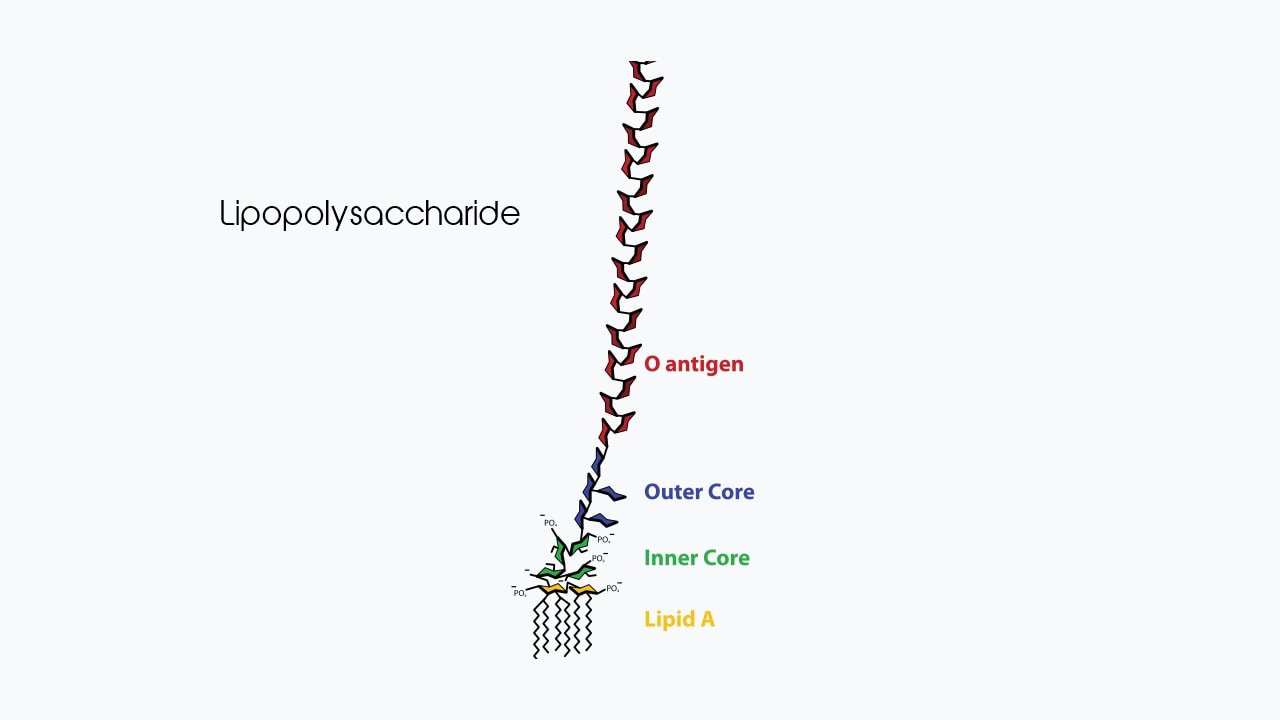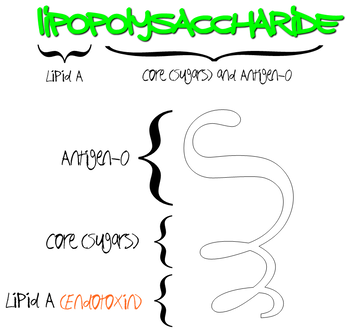Endotoxins and Lyme Disease: The Reason the Herxheimer Reaction Exists
"Endo" Meaning "Internal" or "Inside", and 'Toxin" Meaning "poison"
You know what a herxheimer reaction is, and how to deal with one through different detox methods, but do you know the actual culprit directly responsible for the symptoms that manifest as a herx? Introducing the endotoxin. The toxin we all know the spirochete releases in our bodies once they've been killed, or in more scientific terms, lysed (i.e., the destruction of the bacterial cell wall). To understand what an endotoxin is and how it operates with the spirochete it belongs to, let's take a vague look at the structural anatomy of a spirochete.
The SpirocheteThe bacteria responsible for Lyme Disease is a spirochete. It's granted this name due to its spiral shape and the "cork screw" type of fashion it moves in. What powers this movement is the endoflagella; endo meaning "internal" or "inside" and Flagella meaning "whip".
The endoflagella allows the spirochete to move quite fast on a microscopic level. In fact, it moves at roughly 0.00011mph or 60 cell length per second. To put that into perspective, a cheetah moves at around 68mph, or 25 body lengths a second. If a spirochete was the size of a cheetah, the spirochete would be able to move more than twice as fast as the cheetah.
|
|
Cross Section of a Spirochete
As we reduce our perspective of the spirochete even more, we can see the different layers it's composed of and the location of its components. The endoflagella which powers the spirochete's movement is located between the outer member and the peptidoglycan layer.
What also comes into view is the lipopolysaccharides, located in the outer member of the spirochete. This is where our culprit, the endotoxin is found. Lipopolysaccharides not only help preserve the integrity of the spirochete's cell wall, which is crucial to prevent death, but even protect the outer membrane from chemical attacks.
The Lipopolysarrharide
Conventional and herbal antibiotics kill the spirochete by inhibiting its ability to synthesize their cell walls and other metabolic processes to sustain itself. As the spirochete loses its ability to synthesize its cell wall, autolysis (i.e., rupturing or exploding of the cell wall) occurs.
Fragments of the cell wall that contain the once concealed Lipid A (endotoxin), are then released into circulation of the blood stream. Their exposed presence causes a massive inflammatory response, also known as a herxheimer reaction.
The lipopolysaccharide consists of 3 main parts:
- Antigen-O - Is the outer most exposed component of the lipopolysaccharide. As a result, it is a target for the antibodies of the immune system.
- The Core - Attaches directly to Lipid A and Antigen-O.
- Lipid A (Endotoxin) - Is the only non-exposed part of the lipopolysaccharide as it anchors it into the outer member of the spirochete. Lipid A is the endotoxin.
What Happens When the Endotoxins Are in the Bloodstream?
As the endotoxin passes through the blood stream, it binds with lipopolysaccharide-binding proteins that guide it to CD14 cells, an immune system receptor cell. CD14 receptor cells are designed specifically for the detection of endotoxins, and can only bind with them if the lipopolysaccharide-binding protein has already.
Once CD14 has engaged with the endotoxin in the blood, it then transfers it to another protein known as MD2. MD2 then associates with another immune receptor known as TLR4. TLR4's engagement with the endotoxin then causes the production of cytokines and nitric acid (i.e., inflammation) by signaling macrophage and endothelial cells to release them.
|
|
What Happens Next?Depending on how massive of a die off a person has (i.e., the quantity of endotoxins flowing through the blood stream) will determine different outcomes. A reasonable die off reaction will eventually be brought under control by the immune system time and time again. However, a severe die off reaction can truly cripple the body, and even cause endotoxic shock (i.e., death). The larger the amount of endotoxins in the blood, the larger and more pronounced the inflammatory response. As part of the inflammatory response, it's the job of cytokines and nitric acid to expand the blood vessels in order to allow more blood to reach areas of infection or injury.
|
If the amount of endotoxins in the blood is too great, the inflammatory response will be as well, and as a result, vasodilation (i.e., widening of blood vessels) will become too pronounced and result in hypotension (i.e., extremely low blood pressure). Low blood pressure will not allow oxygen rich blood to appropriately circulate through tissue and organs, resulting in hypoxia (i.e., insufficient oxygen supply in the blood) and organ failure.
This is why it's extremely important to be conscious of how you feel after administering a treatment protocol, or increasing your dosage for Lyme Disease. Feeling worse is normal, but do so with reason.
If you notice the dosage level you've consumed has manifested a herxheimer reaction that is completely unbearable and intolerable, either drop your dosage back to a more tolerable level, or refrain from continuing your treatment protocol for at least 3 days (consult with your doctor). This will allow your body to catch up in removing endotoxins from the body, and you can help it through detoxification methods and by reducing inflammation.
When you feel your herxheimer reaction has subsided, slowly begin your treatment protocol again, and slowly build back up to the dosage you last knew you could tolerate.
Resources
- www.hhmi.org/biointeractive/Antibiotics_Attack/pw_2.html
- www.answers.com/topic/antibiotic-resistance
- suite101.com/article/how-do-antibiotics-work-to-kill-bacteria-a74616
- textbookofbacteriology.net/Lyme.html
- textbookofbacteriology.net/endotoxin.html
Note: Images are artistic interpretations of the spirochete's anatomical structure. Shapes and positions may not be accurate interpretations. The images are designed for understanding physical possessions of the spirochete and are not be taken as scientific accuracy.
Also on Tired of Lyme
Refresh
Refresh
Subscribe to Tired of lyme!
Subscribe to Tired of Lyme's mailing list and get notified of new articles!








Comments